Self levelling suspension – Sorted!
Carrying on from my post below, yesterday I started the job of renewing the rear air springs.
Firstly I jacked up the rear of the Disco (in gear, handbrake on and wheels chocked) to allow me to get a pair of axle stands under the chassis, just forward of the rear axle, you need to get the rear wheels just off the ground. Next, with the trolley jack under the rear axle I adjusted the height of the axle so that the rear wheels were off the ground, (it’s safer and best to ‘crack’ the wheel nuts first while the wheels are still on the ground). Once I’d checked that everything was safe and secure I removed the rear wheels completely and set them to one side.
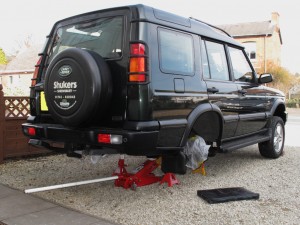
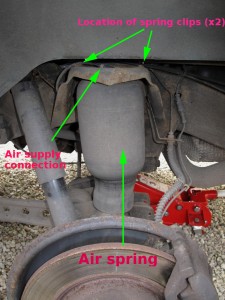
The next step is to depressurize the air suspension, there are a number of ways to do this, I ended up undoing two of the pipe unions at the compressor end of things. The compressor is located on the nearside (RHD) chassis rail, approximately below the passenger seat. Release the cover of the compressor by turning the two quick release fasteners, this will expose the compressor and associated pipework, only the two outer unions need to be undone, do this very carefully and slowly. As soon as you hear the air start to hiss out you will only need another turn of the nut and then leave the air to ‘bleed’ out, this will only take a minute or two. You can check the air springs by squeezing them, they will collapse easily once depressurized and the hissing will stop at the compressor.
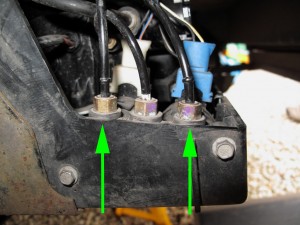
The next step is to remove the two clips from the top of the upper spring seat which secure the air spring to the upper seat; they will probably be very corroded and are best removed with a screwdriver or similar. When the air spring has become pliable, squash it down so that you have access to the nut that secures the air supply pipe to the air spring, undo this nut to release the air pipe, all you need to do to fully remove the air spring is to twist the whole thing 90° and lift it up and it should be free. At this point cover the end of the air supply pipe with a clean polybag or tape to prevent the ingress of debris into the air system.
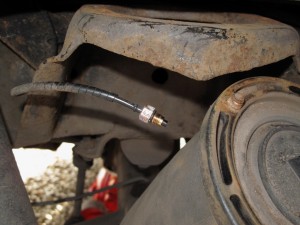
With the air springs removed you’ll be able to see the areas of wear on them, particularly where they fold over themselves towards the bottom, this is generally where the leaks are.
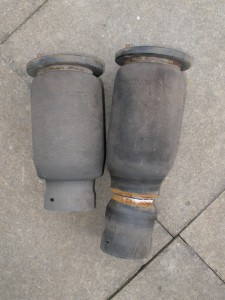
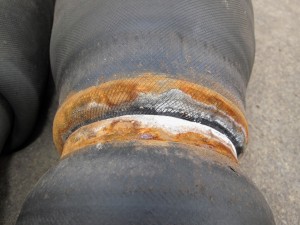
Onto the new ones! They are Dunlop branded items and a bit of a contrast to the old ones, they arrived this afternoon so I got straight down to fitting them. I ordered them from Paddocks Spares – http://www.paddockspares.com/
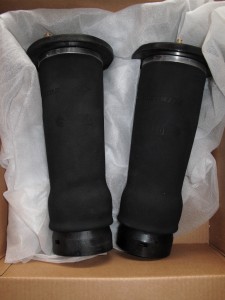
Fitting couldn’t be any easier, simply place the new spring at 90° to the way in which it should face and twist, that’s it! Next locate the two brass clevis type lugs on the top of the springs into the relevant holes on the upper spring mount and fit two new spring clips (part number NTC9449). How you connect the air supply hose will depend upon the fitting on the supplied air spring, Land Rover supplied ones usually have a threaded connection, the one’s I ordered and indeed most aftermarket one’s have a ‘push-fit’ connection. All you need to do with the push-fit type is remove the brass nut on the air supply pipe and with a sharp knife (new Stanley type blades are best) cut the pipe squarely just behind the olive trying to keep as much length on the pipe as possible. Now simply push the cut end as far into the connection on top of the air spring as it will go giving a little tug backwards to check for a secure connection. At this point it’s wise just to go back round all the connections you’ve made and double check them for peace of mind, also make sure that the air springs are seated correctly and not twisted.
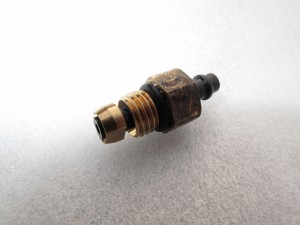
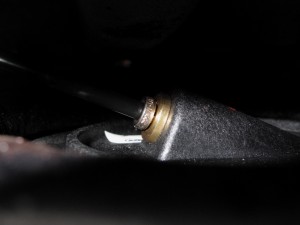
It’s now time to start the engine (remember to keep all doors closed) and let the engine idle for about 20 seconds then switch off. Now quickly go round and check the air springs are not twisted or any pipework has blown off. At this point I refitted the road wheels and removed the axle stands but kept the weight of the axle on the jack until the springs had inflated enough to bear the weight of the vehicle. Once the jack has been removed do another quick check for leaks etc. then go on a short road test. Hopefully that’s it, job done!
Many thanks to all that offered advice and guidance on doing this job from the Discovery II forum. Also, this is the way I did this job, I’m not saying it’s the best or even the recommended way, always put safety first and if you feel unsure, don’t do it!
Nice article. Excellent photos!
I’m sure that the ‘Discovery’ tag is larger than the ‘Freelander’ one now!!! 🙂